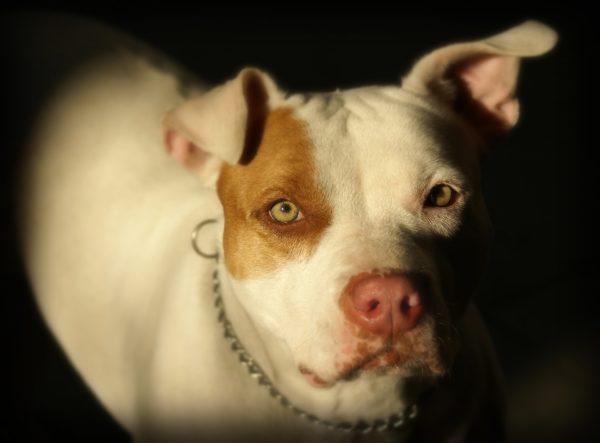
(Photo by ligiera at Pixabay under CC0.)
I don’t think there is another type of dog that has been more exploited or badly treated over the years than the pit bull – or one which generates as much passion and controversy.
One camp feels strongly that they are genetically flawed, completely unpredictable, and should be eliminated completely, armed with dog bite statistics and their belief that temperament is purely genetically controlled.
On the other side of the debate are those that rescue pits or that have them as family members – those that actively interact with them daily – who feel that they are simply amazing dogs. This group is perhaps less confrontational and less inclined to go to statistics for argument, more intuition based, communicating more by example and quiet education than noise.
The intent of this article is to try to uncover why there is such controversy around these dogs and how two such divergent and passionate opinions can exist on the same subject. Since the month of October is Pit Bull Awareness Month it would seem to be the perfect time to explore it.
I suppose the logical place to start is to find out what they are.
So, What Is a Pit Bull?
A pit bull is not a single breed of dog but rather a category or family of dogs. To make it more confusing, several different organizations in the United States register the various recognized breeds. The term is also applied to many mixed breeds based on their physical appearance, as well as other distinct breeds in the same general family.
American Staffordshire Terrier.

(Photo by Crazypitbull at Pixabay under CC0.)
The American Staffordshire Terrier is recognized by the American Kennel Club (AKC) and by the United Kennel Club (UKC). It is reported to be friendly and devoted to its owner.
Staffordshire Bull Terrier.
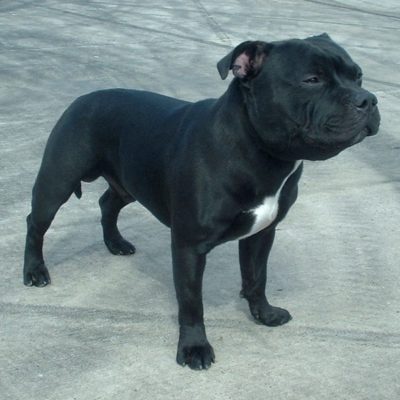
(Photo by Sansse at Wikimedia Commons Under CFDL or CC-by-SA.)
The Staffordshire Bull Terrier is also recognized by both the AKC and UKC. It is described as courageous and highly intelligent and said to be good with children.
American Pit Bull Terrier.
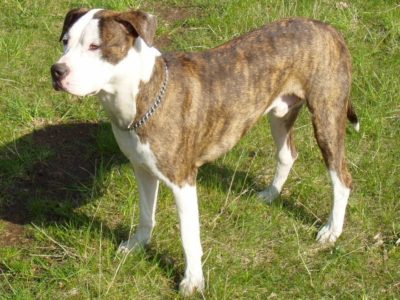
(Photo by Marthy on Wikimedia Commons under Public Domain.)
The American Pit Bull Terrier is recognized by the UKC and the American Dog Breeders Association (ADBA). It is loyal, friendly, with a zest for life, and often used as a “nanny dog” in the past, great with children.
American Bulldog.

(Photo by Sansse (own work) at Wikimedia Commons under GFDL or CC-by-SA)
The American Bulldog is recognized by the UKC, added in 1999. It is reported to be confident, energetic and to bond strongly with their families.
American Bully.

(Photo by Dlexus at Wikimedia Commons under Creative Commons Attribution-Share Alike 4.0 International.)
The American Bully is also recognized by the UKC, added in 2013. It is said to be highly adaptable, being laid back in the home and energetic and strong outside, with a zest for life.
Bully Breed Dogs.
Are you confused yet? Well, let’s add another category: bully breed dogs. This includes 12 different separate breeds of terriers, mastiffs, bulldogs, Boxer, Great Dane, Pug, Rottweiler and others, all originating from the same ancient breed, the Molosser. Sara Logan Wilson in the Canine Journal provides a full list of all the bully breeds in this article.
The only common denominator between these different dogs seems to be having been related somehow to the Molosser. To find out more, we must go back much farther than these recent breeds and their confusing pedigrees.
Ancient History of the Breeds
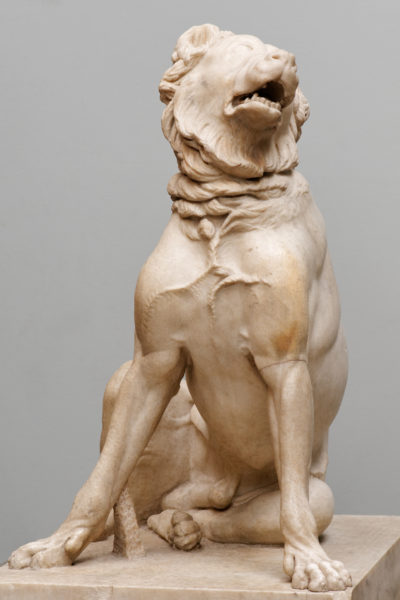
(Photo by Marie tan Nguyen at Wikimedia Commons under Creative Commons Attribution-Share Alike 4.0 International.)
The ancient Greeks had big fierce war dogs, named Molossus after the region they came from in Greece, though they are felt to have been of Asian origin. Because of their ferocity, they were valuable and were sold along Greek trade routes.
In Britain, descendants of these dogs eventually became mastiffs, bred to be war dogs. They later spread to Rome with the Roman invasion to become war and gladiator dogs, called Pugnaces.
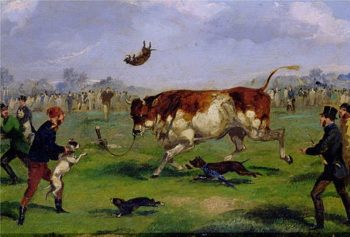
(Samuel Henry Alken via Wikimedia Commons under public domain.)
The mastiff-type dogs continued to be used in Britain for bull and bear baiting, sports which were considered to be “entertainment” throughout the 16th and 17th century, and these dogs and their offspring were quite valuable there.
Legal blood sports ended in Britain in 1835 with the Cruelty to Animals Act, but the “entertainment” switched then to dog fighting, which could be much more easily concealed from police. They crossed the larger mastiff-type dogs with terriers for smaller size, creating the “bull-and-terrier” dogs. These dogs fought in pits, and became known then as pit bulldogs or pit bulls.
History of Pit Bulls in America.
When the English immigrants came to America, they brought their fighting dogs with them and continued the tradition. However, with the migration west, their dogs were needed then as farm, guard and hunting dogs, and so with crossbreeding the size of the animals again increased.
By the 1860’s, dog fighting was illegal in many states, though it continued.
In the late 1800’s, pure breed dogs started to gain popularity, and the AKC was founded in 1884. The AKC refused to endorse anything related to dog fighting, so the UKC was formed in 1898 to register breeds of fighting dogs. In 1909, the ADBA was formed to register the American Pit Bull Terrier, also considered a fighting dog.
(Thank you to Burnoyt Hulo for video via YouTube.)
Despite continued illegal dog fighting, the perception of these dogs didn’t seem to suffer, and some of them were truly heroes. The dog in this video, Stubby, was awarded the rank of Honorary Sergeant in World War I and was loved nationwide and decorated for his time spent in service to this country.
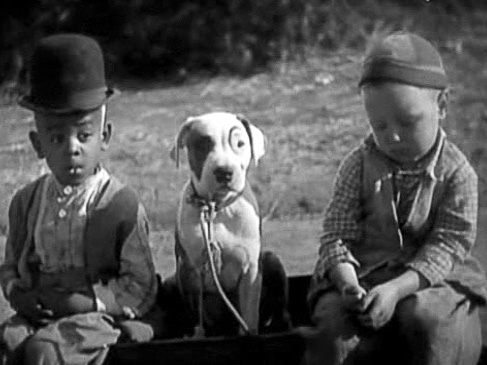
(By Robert F. McGowan (School’s Out at archive.org) via Wikimedia Commons under public domain.)
Petey, an American Pit Bull Terrier, was an icon and popular movie star of the 1930’s, and the image of anything but a ferocious fighting dog.
In 1936, the AKC still refused to register American Pit Bull Terriers because of their fighting connotation. The breed of American Staffordshire terrier was added, which had a little bit different lineage than many of the American Pit Bull Terriers, and they were finally admitted to the AKC. Petey (right) was one of the first American Staffordshire terriers to be registered by them.
More Recent History of Pit Bulls in America.
With continued public pressure, the UKC stopped its support of dog fighting in the 1960’s. In the 1970’s, the American Dog Owners Association (ADOA) was founded to lobby for harsher penalties in an attempt to stop dog fighting once and for all.
With harsher penalties, the knowledgeable breeders and trainers retired or went underground, and the new breeders and trainers were left to their own devices. Their practices included even more cruelty, stolen dogs, beatings and poor breeding – and a public relations nightmare.
It seems to be right around this time that the focus on these animals shifted from the cruelty of the “sport” of dog fighting to the dogs. Now the dogs themselves were villainized rather than the owners whose training was creating these “monsters.”
In an attempt to increase public safety, some breed specific legislation (BSL) had been passed to eliminate the fighting dogs, both here and in other countries. Because it has proven ineffective, much of this has since been repealed.
The Animal Farm Foundation, whose goal is “securing equal treatment and opportunity for “pit bull” dogs,” still maintains a BSL map here showing communities with continued BSL in the United States. I was quite surprised to see there are several communities locally that still have such legislation in place.
(Thank you to Lovedanes22 for video on YouTube.)
Final Thoughts.
This video pretty much reflects my mood right now – both the music and the sentiment. This is a good stopping place for now.
In the following parts of this series we’ll look at statistics – lots of dog bite statistics. We’ll also look at genetics and what role that plays in behavior, the role that training and socialization has on behavior, recent policy recommendations for public safety and reduced dog bites, and finally some pit bull myths and truths.
A special thank you to the above-mentioned photographers and creatives for making their work available for use.
My sources for this article are listed below for further reading.
Sources/Further Reading
https://en.wikipedia.org/wiki/Pit_bull
www.caninejournal.com/pit-bull-facts/
Coile, D. Caroline, Ph.D. (2001). Pit Bulls for Dummies. Indianapolis, Indiana: Wiley Publishing, Inc.
O’Neil, Jacqueline (1995). The American Pit Bull Terrier: An Owners Guide to a Happy Healthy Pet. Nashville, Tennessee: Howell Book House.
www.animalfarmfoundation.org/pages/BSL-map
Like this? Share it!

